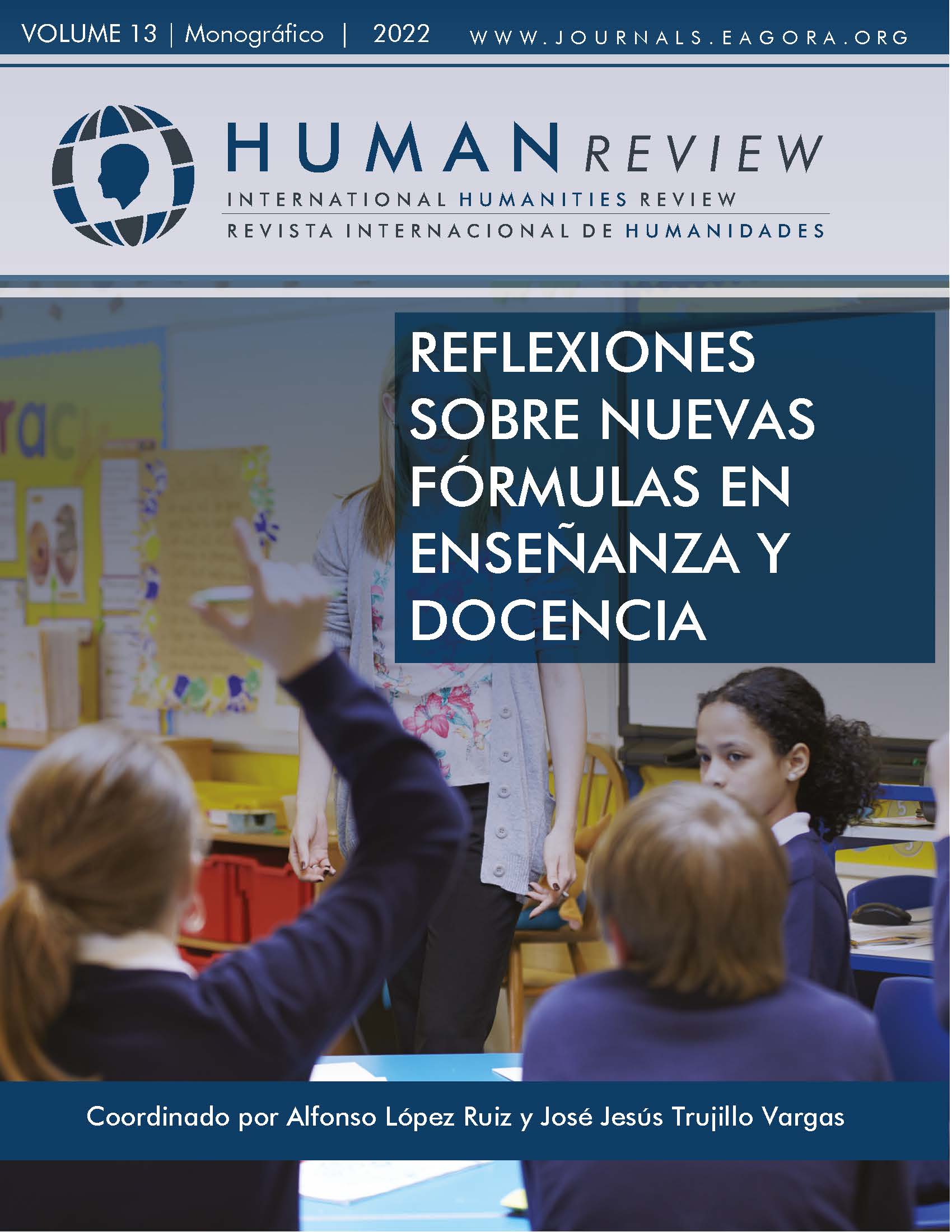Application of technology for the design of transmedia projects in college
Case study: It ends with us
DOI:
https://doi.org/10.37467/revhuman.v11.4084Keywords:
Transmedia, Technology, Motivation, Interactivity, Transfer, Audience, CreationAbstract
The term transmedia coined by Jenkins (2003) refers to those stories that expand their stories through different distribution channels. This way of building narrative stories becomes extremely interesting and natural for the Alpha and Zeta generation. Given this scenario, the university subject Creation of transmedia stories is presented as an opportunity for students to explore the possibilities of transmedia and apply it specifically to a cultural product. This article will analyze a cultural case study.
References
Andem, J. (2014.) Skam. NRK P3.Fernández, E. y Linares, R. (2015) ¡Echa el anzuelo! Estrategias de pitch para jornadas audiovisuales y proyectos transmedia. UOC.
Gifreu Castells, A. (2011). The interactive multimedia documentary as a discourse on interactive non-fiction: for a proposal of the definition and categorisation of the emerging genre. Capítulo 5. http://www.raco.cat/index.php/Hipertext/article/view/246258
Hayes, G. (2011). How to write a Transmedia Production Bible. Screen Australia. http://videoturundus.ee/bible.pdf
Colleen H. (2016). It ends with us. Simon and Schuster.
Jenkins, H. (2003, 15 de enero). Transmedia storytelling. MIT Technology Review. https://bit.ly/3NS3sZD
Jenkins, H. (2009a). The Revenge of the Origami Unicorn: Seven Principles of Transmedia Storytelling Parte 1: http://henryjenkins.org/blog/2009/12/the_revenge_of_the_origami_uni.html
Parte 2: http://henryjenkins.org/blog/2009/12/revenge_of_the_origami_unicorn.html
Jenkins, H. (2009b). Fans, blogueros y videojuegos. La cultura de la colaboración. Paidós Comunicación.
Kotler, P. (2021). Marketing 5.0 Tecnología para la humanidad. LID Editorial.
Pratten, R. (2011). Getting started in transmedia storytelling. CreateSpace Independent Publishing Platform.
Slade, D. (2018). Black Mirror: Bandersnatch. Netflix.
Orihuela, J.L. (2003) eCommunication: The 10 paradigms of media in the digital age. En Salaverría. R. &Sádaba, Ch. (eds.): Towards New Media Paradigms. Content, Producers, Organisations and Audiences. IICOST A20 International Conference Proceedings, Ediciones EUNATE, Pamplona, 2004, pp. 129-135. https://bit.ly/3OdwcMD
Scolari, C. (2009). Transmedia Storytelling: Implicit Consumers, Narrative Worlds, and Branding in Contemporary Media Production. International Journal of Communication (3), pp. 586-606.
Scolari, C. (2013). Narrativas transmedia. Cuanto todos medios cuentan. Deusto. DOI: https://doi.org/10.1515/sem-2013-0038
Vara-Miguel, A., Amoedo, A., Moreno, E., Negredo, S. y Kaufmann-Argueta, J. (2022).Digital News Report España 2022. Pamplona: Servicio de Publicaciones de la Universidad de Navarra. DOI: https://doi.org/10.15581/019.2022 DOI: https://doi.org/10.15581/019.2022
Downloads
Published
How to Cite
Issue
Section
License
Those authors who publish in this journal accept the following terms:
- Authors will keep the moral right of the work and they will transfer the commercial rights.
- After 1 year from publication, the work shall thereafter be open access online on our website, but will retain copyright.
- In the event that the authors wish to assign an Creative Commons (CC) license, they may request it by writing to publishing@eagora.org









